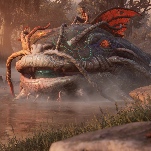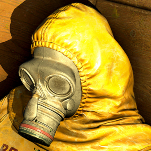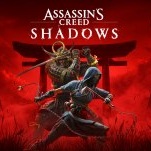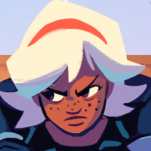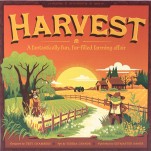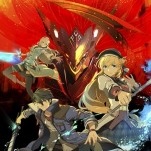Darksiders II (Multi-Platform)
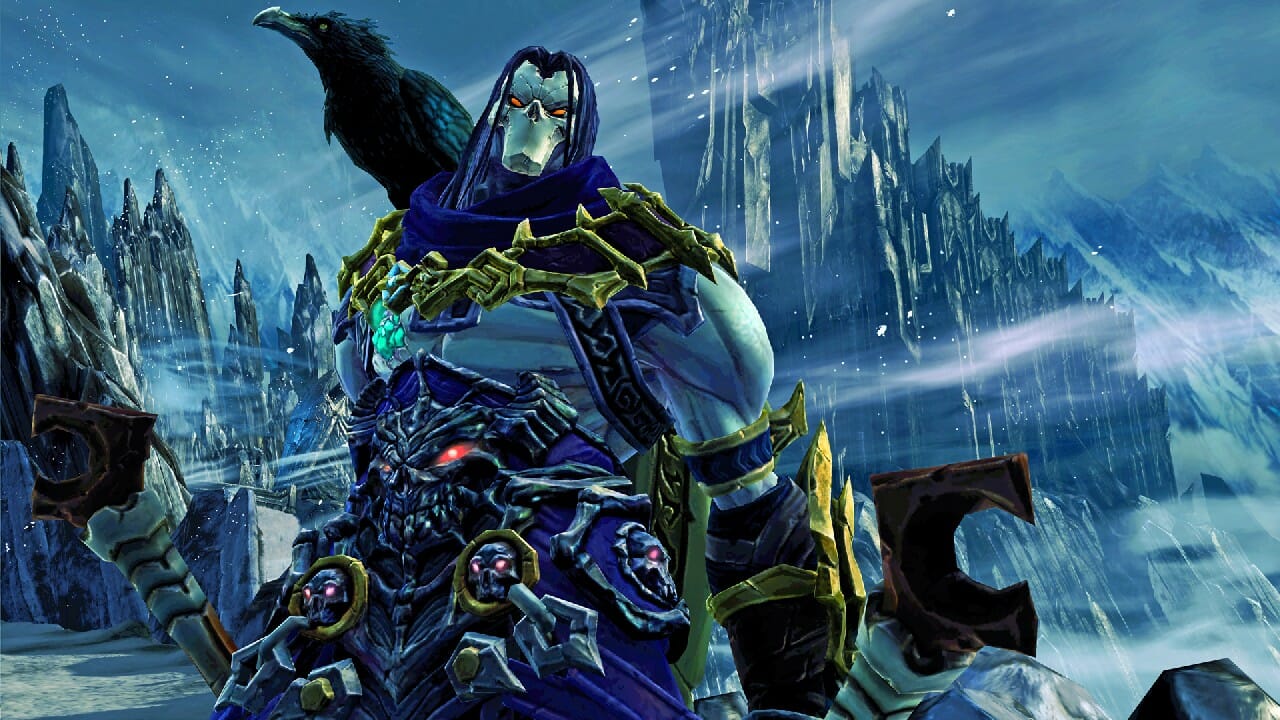
“When the Lamb opened the fourth seal, I heard the voice of the fourth living creature say, ‘Come!’ I looked, and there before me was a pale horse! Its rider was named Death, and he was given power over four worlds with dungeons and puzzles and loot and stuff, and Death was super snarky. Amen.”
-Revelations 6 or something
![]()
Video games are just now entering an era when its audience will know the medium’s full canon. We’ve played Zelda, and so Darksiders was not, as it were, a revelation. To best explain Darksiders, we would say, “It’s like Zelda,” right? The dungeon design, the skeleton keys, the mini-boss to gadget to boss to overworld trajectory – these are practically trademarked by the Zelda series, so any future appropriation will have to suffer under that shadow. At least, in that example, Darksiders plays with the ideas from a storied, beloved franchise.
Darksiders II, not to be outdone by its older brother, bastardizes the canon of The Legend of Zelda, God of War, Shadow of the Colossus, Diablo, Portal, Doom, The Elder Scrolls, Torchlight, Singularity, Prince of Persia, and, oh yes, the Bible.
Before this sounds too much like a single-minded judgment of Vigil Games’ potluck development style, know that the hodge-podge of mechanics and worlds and characters and ideas that is Darksiders II is a thrill ride at its best and only occasionally droll at its worst. The journey takes players through imaginative overworlds and dungeons packed with loot to grab, enemies to slay, walls to scale (a la Prince of Persia), and puzzling rooms to unlock. The real criticism to levy against the game’s amalgam approach is that because the developers diversified the creation of the experiences, the pillar moments in Darksiders II lack the foci that the games they embody have done so well. By consequence, the patchwork pieces aren’t as memorable, although they contain the rich mechanical elements that first made the concepts popular.
![]()
For example, Darksiders II’s protagonist, Death (the horseman of the apocalypse), one-ups his brother War from the first game by tackling ancient angelic and demonic forces fifty times larger than anything his brother encountered. Circling a corrupt stone guardian thirty stories tall on the back of Death’s pale horse, Despair, feels like a singularly lonely and wordless moment from Shadow of the Colossus. But the real moment of triumph, the coup de grace when Death vaults through the air and strikes the last soul stone to release the rock creature (yes, I know how ridiculous it sounds), plays out in a non-interactive cut scene.
And later, when Death arrives at the coliseum in hell riding a pirate ship pulled through space by two giant serpents, his epic dismount is also a cut scene. Rue the day that I first begged for a quick-time event, or something, anything to make me feel some sense of ownership over those moments of grandeur and bad-assery. No, instead I’m given the control of a dialogue tree when Death accepts another fetch quest from the King of Bones.
Inside that umbrage is further umbrage. The combat system (distinct from but reminiscent of God of War) is chock full of haptic feedback, and accents finishers with slow-mo and loads of gore, which paints a portrait of the fourth horseman of the apocalypse as I’d imagine. He’s ruthless, quick and brutal. Then he talks to an old guy and a goat-man and he’s out picking up key halves and ghosts to gently goad these NPCs into cooperation. I just saw him tear out a demon champion’s throat, and he can’t muster a little intimidation to coerce the pipe-smoking cattle-merchant? Darksiders II is its own intellectual property, so I wouldn’t charge Vigil with shaping its characters like, say, an outcast Greek god on a bloody vengeance trail, but some consistency in Death’s response to opposition is warranted.
The protagonist’s motivation is, then, also in question. I know that Death is “on a mission to restore his brother’s honor”, but I’m not made to believe that. The first level opens in medias res, a plot taking place chronologically alongside the events of the first game, and Death is thrust into an ice tower and pitted against War’s doppelganger. And that, apparently, is all the justification we get for Death to slash his scythes through four universes and wave upon wave of corrupted enemies of increasing strength, speed and volume.
-

-

-

-

-

-

-

-

-

-

-

-

-

-

-

-

-

-

-

-

-

-

-

-

-

-

-

-

-

-

-

-

-

-

-

-

-

-

-

-


































